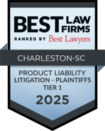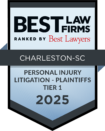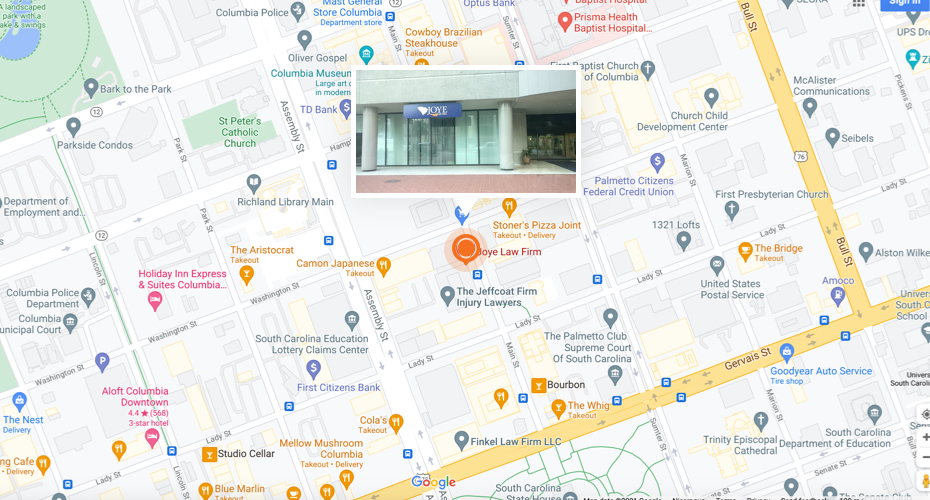
One of the most common reasons for a bone to break or fracture is a car accident. Crashes can be devastating, as the tremendous force that the body is forced to absorb can sometimes cause one or more bones to break.
If you suffered fractures in a car accident in Charleston, Myrtle Beach, Clinton, Columbia or elsewhere in South Carolina, you may have a legal right to obtain monetary compensation for your losses. If someone else was responsible for the crash through their negligence, then you may be able to pursue a claim against that person’s insurance company for monetary damages. Joye Law Firm can work to help you recover compensation to assist you in your recovery. Our South Carolina car accident lawyers have been helping individuals and families whose lives have been disrupted by car accidents since 1968. Let us help you, too.
Broken Bones in South Carolina Car Accidents
Essentially, any bone in the body can be fractured or broken as a result of a car wreck. The breaks are typically caused by the force of the crash, the body being hit with external objects, being thrown forward or backward in an unnatural way, having the limbs and bones twisted or bent unnaturally, being thrown from the car, or being crushed in the crash.
While any bone could break depending upon the specifics of the crash, some of the most common bones susceptible to fractures caused by car wrecks include:
- Vertebrae in the spine
- Neck bones
- The femur
- The collarbone
- The pelvis
- Ribs
- Bones in the sternum
- Bones in the skull
- Bones in the neck
- Bones in the ankles
Often, surgery or a cast is required in order to facilitate healing. You may also need pain medications, physical therapy and other treatment to cope with the damage to your bone and with the recovery process. In some extreme cases, no amount of treatment can help the bones to heal or fuse properly, and the victim will face a lifetime of impairment.
Types of Fractures from Car Accidents
Some of the different kinds of fractures from car accidents include:
- Transverse – The bone is snapped into two pieces as a result of direct pressure or a direct hit. The bone is generally broken at a right angle, perpendicular to the long axis of the broken bone.
- Compound – This is one of the worst types of fractures. With a compound fracture, the broken bone will push out and protrude directly through the skin. There is a very high risk of infection with a compound fracture.
- Comminuted – When bones break into three or more pieces, the resulting fracture is referred to as a comminuted fracture. Typically, this type of fracture occurs due to acute pressure or due to a powerful impact. Repairing comminuted fractures is extremely difficult.
- Buckle – Also called an incomplete fracture or a torus, a buckle fracture happens when the bone begins to bend, rupture or strain, but no break occurs. Children are the car accident victims most susceptible to buckle fractures because their bones have not yet fully formed.
- Stress – Like buckle fractures, stress fractures are partial breaks and are more common in children. The difference is that when a stress fracture occurs, one side of the bone fractures and the other side bends.
- Oblique – These typically occur in situations where the bone breaks along the diagonal of the long axis. This kind of fracture is relatively rare but can happen in car wrecks if one bone gets trapped and another bone is twisted over the top of the trapped bone.
- Avulsion – These kinds of fractures happen in situations where the bone and the soft tissue separate. Soft tissue refers to ligaments and tendons that join the bones to the muscles or join the bones to each other. Often, those with avulsion fractures will be in serious pain. Surgical intervention is often necessary to resolve the serious complications of an avulsion fracture.
- Hairline – Hairline fractures are partial breaks or small cracks in the bone. Those who suffer hairline fractures may not be aware that they have this small break or crack and thus may not receive the medical treatment they need. As a result, the small crack can continue to grow and the fracture can become worse, resulting in the bone becoming very weak.
An experienced medical professional needs to conduct X-rays and other appropriate tests immediately after a car accident to determine if any bones in your body have sustained any type of fractures.
Treatment and Compensation from Car Accident Fractures
Whether you need surgery, a cast, physical therapy or other ongoing medical care, it is important for the person who caused your crash to cover your medical bills. You should also receive compensation for additional medical expenses such as nursing care or adaptive medical devices.
In addition to paying medical costs, the at-fault driver who caused you to suffer fractures should also pay for:
- Lost wages if your fracture caused you to miss work or to take sick or vacation time.
- Ongoing lost income if you cannot work at the job you had prior to the injury or if you cannot work at all. Some people have physically demanding jobs, and a serious bone fracture could end their career.
- The pain, suffering, and emotional distress that result from the accident.
If you have suffered a broken bone in a car accident that was not your fault, Joye Law Firm may be able to help you obtain compensation to assist you during your recovery. Our personal injury and car accident lawyers have been helping people from North Charleston, Myrtle Beach, Columbia, Clinton, and across South Carolina since 1968.
Joye Law Firm attorneys have over 300 years of combined litigation experience, and some of our lawyers have been named Super Lawyers in South Carolina. Some of our lawyers have also received an AV rating (the highest possible rating) from the distinguished Martindale-Hubbell legal directory.
If you suffered a bone fracture because of a car accident someone else caused, call Joye Law Firm or complete our online form for a free initial consultation today.

































